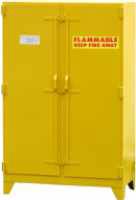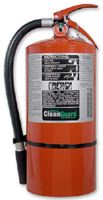 |
 |
| MSDS Topics |
Free Sites | FAQ's | Regulations | Glossary | Software | Suppliers |
| Books | Forum | Poll | Fun stuff | Quiz | Store | |
| MSDS and safety supplies | Search ALL our MSDS info | |||||
 | |||
 |
 |
 |
|
| Title: 11/25/1986 - Interpretation given in the Federal Register on December 20, 1985 describing mild petroleum hydrotreatment is appropriate. | |
| Record Type: Interpretation | Standard Number: 1910.1200 |
November 25, 1986
The Honorable Paul Simon
United States Senate
Washington, D.C. 20510
Dear Senator Simon:
|
This is in response to your letter of October 8, concerning the request by William J. Mutryn, on behalf of Calumet Industries, Inc., for an interpretation of the Occupational Safety and Health Administration (OSHA) Hazard Communication Standard (HCS). Please accept my apology for the delay in response. There are two basic elements to your letter. The first is the assertion that OSHA relied upon a textbook by Dr. James Speight in making its interpretation of the HCS as published in the Federal Register on December 20, 1985, and then misapplied the information in the book. The second element of your letter addresses the request by Calumet for a re-interpretation of the HCS based on data it submitted on June 19, 1986. Contrary to Mr. Mutryn's statement, OSHA's interpretation (which describes mild hydrotreatment) was not specifically predicated on Dr. Speight's text, The Chemistry and Technology of Petroleum. (Please see the attached copy of the relevant page of the Federal Register notice.) The Speight text is referred to as one of a set of supporting references, but the important point is that OSHA relied upon the International Agency for Research on Cancer (IARC) for its interpretation. IARC in turn relied on certain research papers cited in the Federal Register notice. One of these papers, in turn, referred to Dr. Speight's book. Moreover, as the Federal Register notice points out, the book was also referred to in the context of a description for mild hydrotreatment identical to the one chosen by OSHA at an informal meeting held by OSHA for interested parties on November 7, 1985. In other words, representatives of major oil companies regarded the context of Dr. Speight's book the same way that OSHA did. |  Chemical storage cabinets and more at Safety Emporium. |
OSHA's objective was to establish a set of values which could reasonably be considered representative or characteristic of mild hydrotreating as related to the determination in the IARC Monograph. The very fact that the numbers used are the only specific numbers cited by Dr. Speight testifies to the fact that he, himself, regarded them as representative. As to the specific sentence Dr. Speight refers to as having been neglected, it is a vague statement that no one we talked to in the oil industry was either able or willing to quantify. (A copy is attached.)
In his affidavit, Dr. Speight refers to the difficulties associated with defining "mild hydrotreatment." OSHA agrees with him. The issue to be addressed, however, is that of how IARC used process parameter information to arrive at its findings of carcinogenicity. In view of the overall circumstances, OSHA believes the interpretation given in the December 20, 1985, Federal Register notice to be appropriate. Please note that no oil company which engages in hydrotreating has taken issue with that determination.
|
With respect to the Calumet request for an amended interpretation on this issue, OSHA has no evidence that such an amended interpretation is appropriate at this time. Calumet has submitted data related to short term testing. As you may recall, in the responses I sent to your questions during my confirmation proceedings I pointed out that short term tests, while useful as corroborative evidence in supporting animal testing, are not considered by the scientific community to be sufficient, by themselves, for a determination of carcinogenicity. Nevertheless, we have not refused to consider the data sent to us by Calumet. We are submitting the data to outside scientific sources to determine, in particular, if anything that has been submitted warrants a re-evaluation of the significance of short term testing. When we have the results of that determination, we will take whatever action, if any, is indicated. I hope this letter answers your concerns. Please let me know if you have further questions. Sincerely, John A. Pendergrass |  Get every kind of fire extinguisher imaginable at SafetyEmporium.com. |
The official, public domain, OSHA version of this document is available at http://www.osha.gov/pls/oshaweb/owadisp.show_document?p_table=INTERPRETATIONS&p_id=19508&p_text_version=FALSE